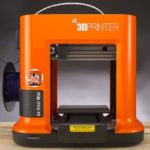5 Tech Tips for Creating More Effective e-Learning Courses
In 1993 less than 1% of the world’s population had an internet connection. Today it is estimated that between 40%-50% of the world now has an internet connection.
So what do this mean for teachers and their students?
Rapid technological advancement is revolutionizing how students are learning and how classes are being taught around the world. Increased global internet connectivity and affordable mobile devices are fueling a multi-billion dollar eLearning (electronic learning) industry.
Schools, organizations, and governments are developing their own custom elearning courses that are resulting in higher knowledge retention rates, time & money savings, and better rounded students.
By taking advantage of the available technology, institutions can improve educational accessibility and impact more learners. However, even with an abundance of technology at their fingertips, many course developers and teachers simply don’t know how to put it to use.
Here are 5 ways you can use current technology to design more effective custom eLearning courses:
1. Try to Make Your Custom eLearning Courses Multi-Platform Friendly (Responsive)
In recent years we have seen more and more people embracing multiple types of devices. Stemming from the traditional PCs and laptops, there are now tablets, phablets and smartphones. You can greatly increase the coverage of your course simply by making your course accessible on different platforms. The more mobile your course is, the more people can interact with it from anywhere in the world, at any time.
There are a number of things you should pay attention to in order to make sure your custom eLearning courses are effective on mobile platforms.
The first thing you want to do is to use a responsive eLearning authoring tool. In case a learner accesses your course from a mobile device, its elements, including the menu, text boxes, image alignment, etc., will automatically adjust without any distortion.
The other thing to have in mind is the font being used. If your course is to be clearly viewable on small mobile devices, stay away from fancy fonts that limit readability.
It’s important to keep your material navigable on mobile devices. This means having the right size buttons and adequate space between them to allow users of small screen touch devices to interact with your custom eLearning courses.
2. High Quality Video in Your Custom eLearning Courses
While video loses some points as an e-learning tool because it puts learners in a passive state momentarily, it is still great for demonstrations. It can be re-watched, easily shared, and it can incorporate the largest number of communication modes: audio, text, and visual.
Of course, the video has to be high quality. But ordinarily, the higher the quality, the bigger the video size. This tends to make your custom eLearning courses more taxing on computer systems. There’s a way to navigate around this, namely with cutting edge video compression software. You can dramatically reduce your video size and save on bandwidth but still keep your video visually in tact.
3. Virtual Reality for high risk tasks training
Virtual reality is not a new concept but its application in elearning is only now becoming more apparent. The technology can be used to build friendly human-machine interfaces and by so doing greatly enrich the teaching and learning experience.
Additionally, in the virtual reality world, the probability of physical injury is ‘virtually’ zero. This means that tasks that are actually high risk in the real life can be simulated in the virtual world. By so doing, students can practice doing risky tasks without actually putting themselves in physical danger. Take for example soldiers who have to train to disarm bombs in a limited time frame. If they fail the task, the bomb will explode (digitally) and they will be able to see and hear the effects of failing, but they won’t have to feel physical pain.
Simulated learning environments give learners the option to fail and try again. Since learning is often inhibited by fear of failure, VR gives students more freedom to be creative and innovative in challenging situations.
4. Cloud Computing For Easier Accessibility and Safer Storage
Cloud computing simply means storing and accessing both data and software over the web as opposed to the traditional computer hard disc. ‘Cloud’ is simply a metaphor for the world wide web. In cloud computing, computers called servers are used to store data. They can be located anywhere in the world in buildings known as server farms.
Using cloud storage to keep your e-learning material means your data is much safer and more secure. Your e-learners also have unlimited access anytime, anywhere in the world and from any device so long there’s an internet connection.
Students can also store and retrieve their files easily without the risk of virus infections or losing their data due to their devices being stolen. Examples of good cloud storage include Google’s ‘Drive’ and Apple’s ‘iCloud’.
5. 3D Printing for More Learner Interaction – Balancing Theory and Practical Experience
Imagine students in high school chemistry being able to print out and study molecules and their structure. There is no need to image it because it is already happening.
As a technological e-learning tool, 3D printing ranks high up along with virtual reality in its depth of interactivity. It allows e-learners to convert digital data into 3-dimensional physical objects. The result is the merging of the digital and physical learning environments. It is a powerful visualisation tool which enhances the interaction of the learners with the lesson and transforms the way that educators interact with their classes.
Using 3d printing in custom eLearning courses means any student anywhere can access your data and produce real world 3d objects they can interact with and manipulate. The beauty of this is that creative, hand-on courses, no longer have to be limited to boring text book theory. Students can see and touch their designs.
Author bio:
Harold Aguirre Is a self-acclaimed techie who has been working in the e-learning development industry for more than five years. As a freelance writer, he focuses on how modern education and training are being revolutionized by technology. His aim is to help educators and trainers to create more engaging and enriching learning experiences. More of his work can be seen on this eLearning company blog.

















